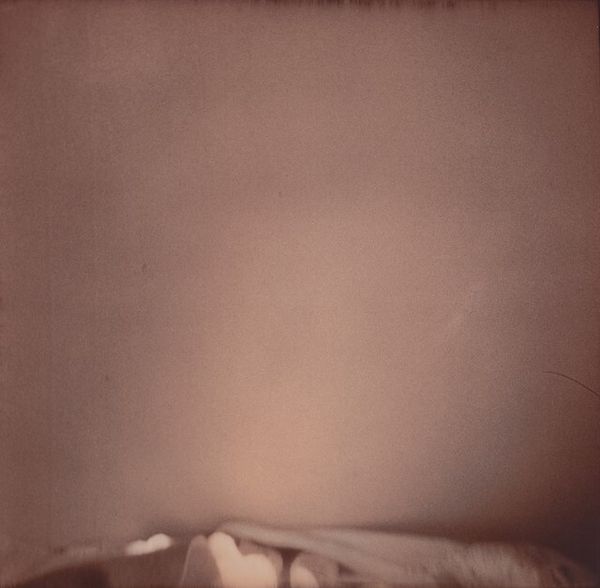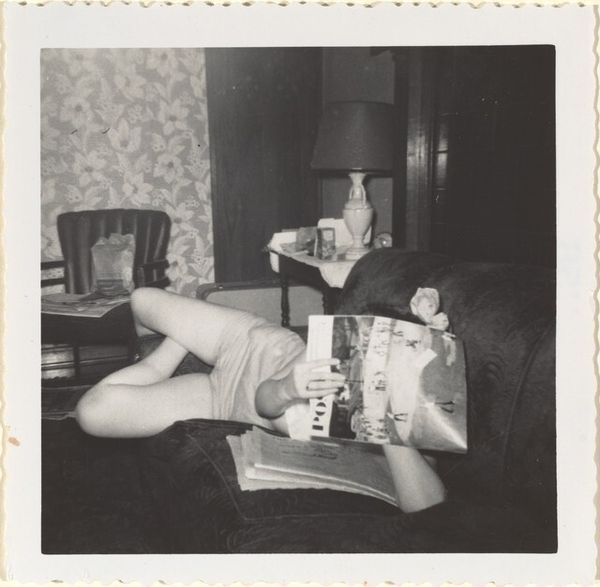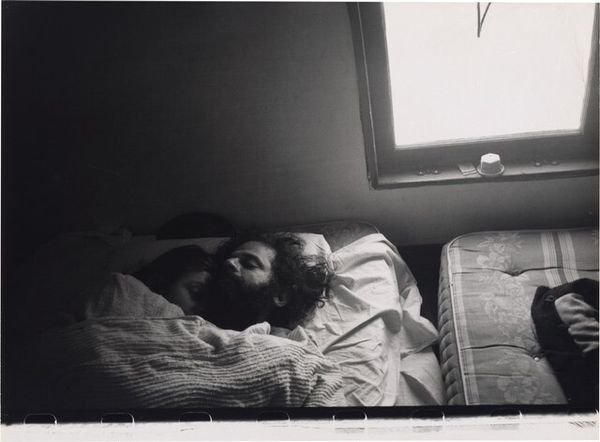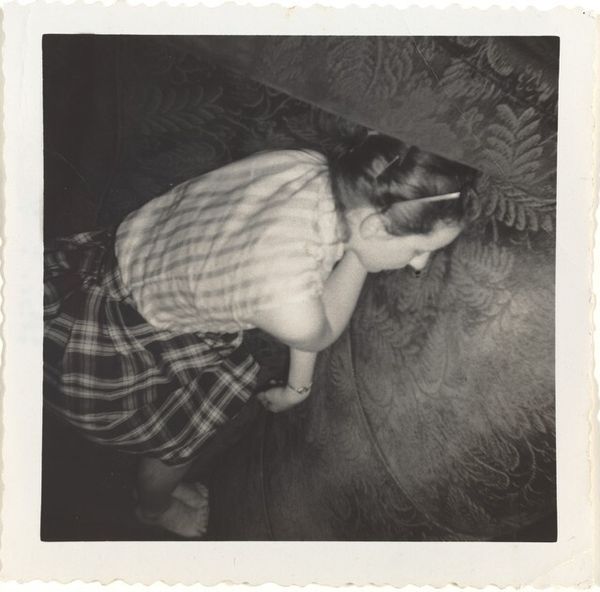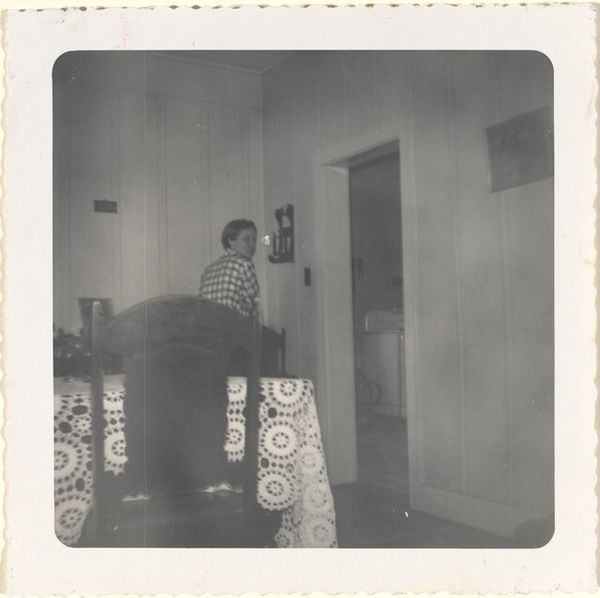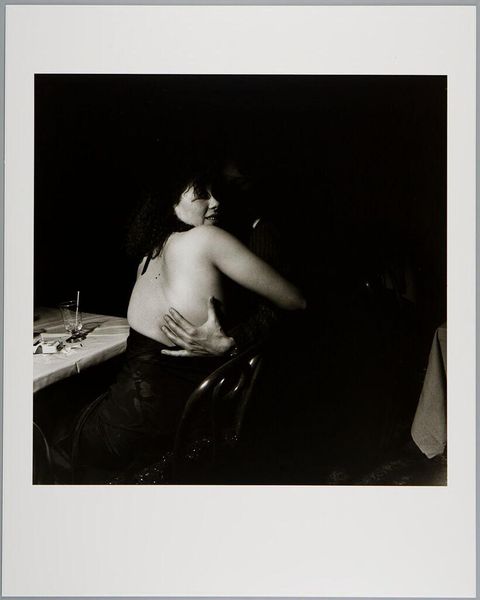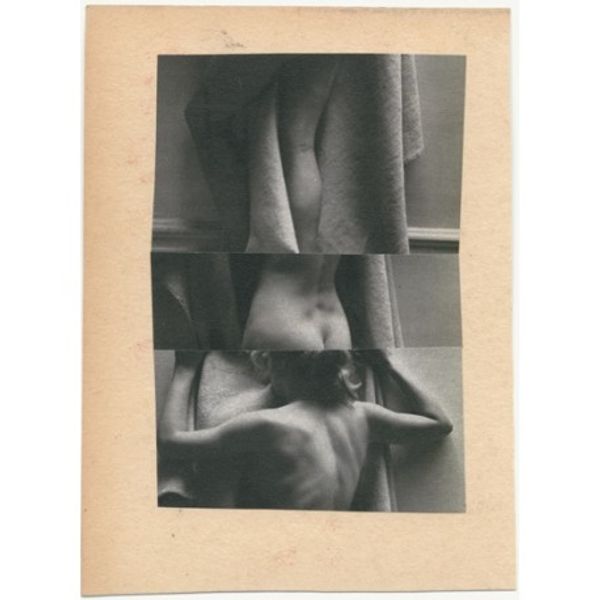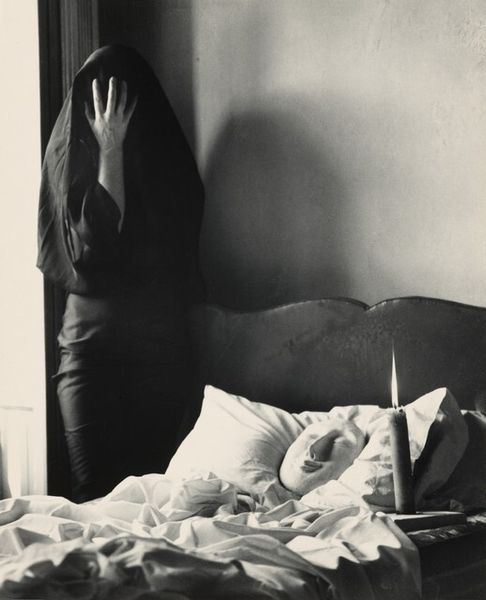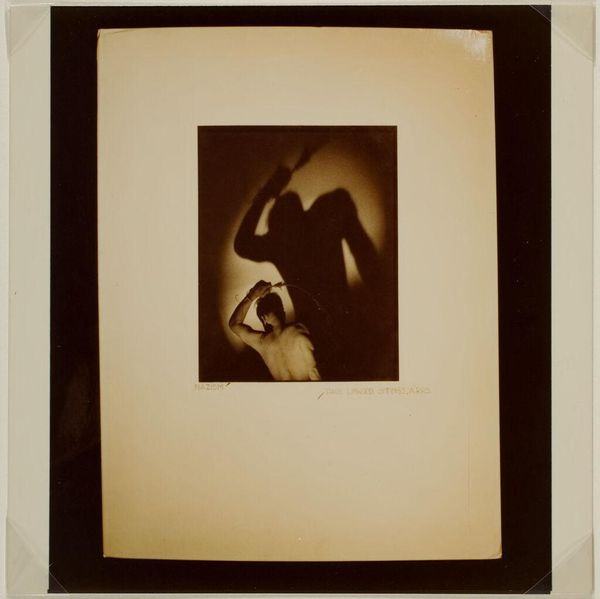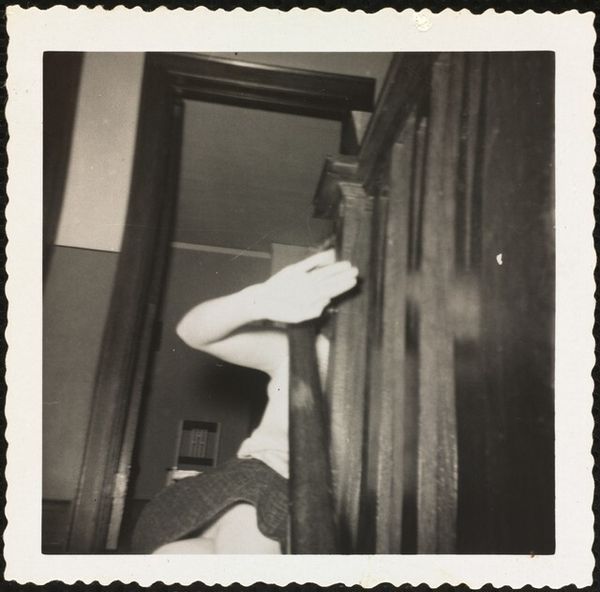
photography, gelatin-silver-print
#
portrait
#
print photography
#
photography
#
historical photography
#
strong emotion
#
intimism
#
gelatin-silver-print
#
erotic-art
Dimensions: image: 7.6 x 7.8 cm (3 x 3 1/16 in.) sheet: 8.8 x 9 cm (3 7/16 x 3 9/16 in.)
Copyright: National Gallery of Art: CC0 1.0
Curator: Looking at this image, one immediately notes an unsettling tension between intimacy and obfuscation. Editor: Indeed. We're looking at a gelatin-silver print from 1955 titled "Dorie." What strikes me is how the blanket completely obscures the subject's face, which disrupts any direct engagement. Curator: The materials speak volumes here. A gelatin-silver print implies mass production, availability; yet, the content veers into a very personal sphere, a bedroom setting, seemingly unguarded. It poses questions about accessibility and voyeurism. The making of the print becomes intertwined with the making of a private moment public. Editor: And consider the visual language of the time! Post-war, images flooded the cultural landscape; how do images of women, especially in intimate spaces, circulate and what institutional power structures decide what is considered art versus documentation? Curator: Absolutely. It is the interplay of material vulnerability with the possible societal voyeurism that defines the labor performed within the photographic act. It suggests a constructed vulnerability. Editor: Precisely! The print aesthetic offers itself as almost scientific while the scene within implies a narrative where the act of uncovering could speak volumes, playing on cultural conceptions of ideal femininity versus private lived experiences of real people. Curator: Even that blanket's design, something potentially mass-produced, domestic, becomes this key device masking and presenting Dorie at the same moment. It is where labor meets desire, printed over and over. Editor: It really makes you wonder about the distribution networks, too, the journey of such an image into the hands of collectors or a public display… How social acceptance plays out in that journey, what barriers it faced in galleries. Curator: In the end, considering this photographic labor and its subsequent interpretations is what unveils hidden cultural undercurrents present in 1955. Editor: Yes, it serves to highlight how art can spark broader critical inquiry. Thanks to such visual tension, we must investigate the power of photographic presentation through institutional critique.
Comments
No comments
Be the first to comment and join the conversation on the ultimate creative platform.

